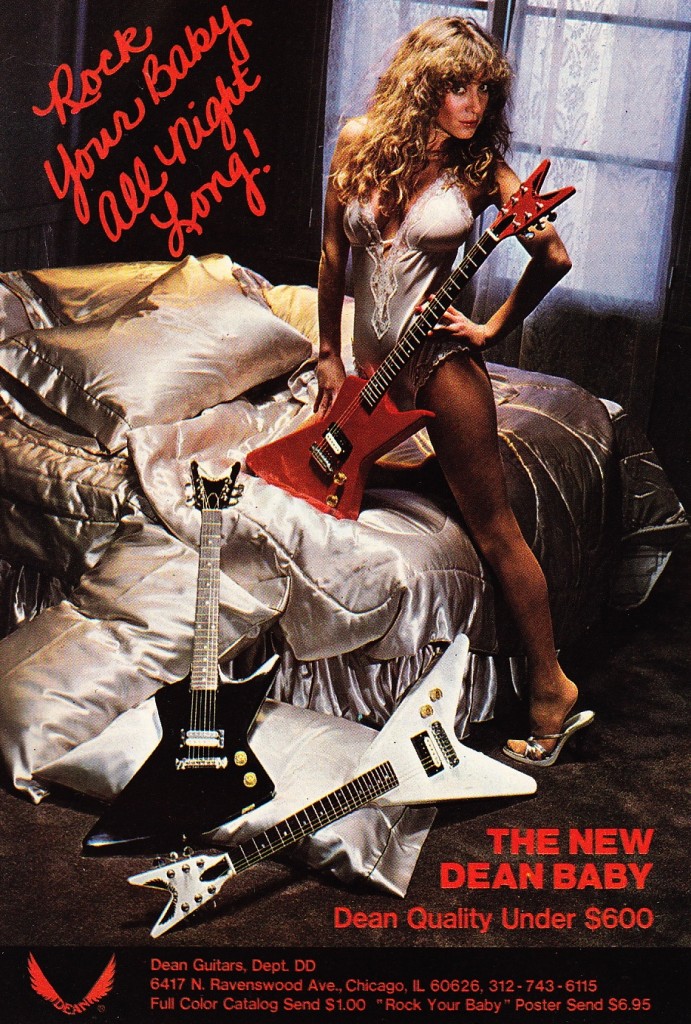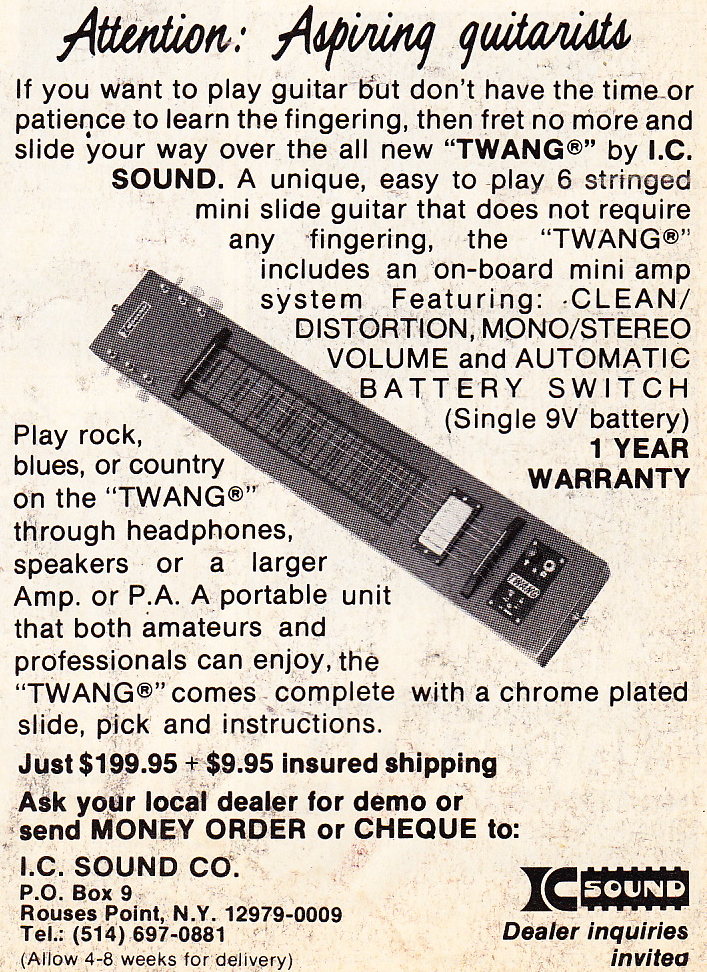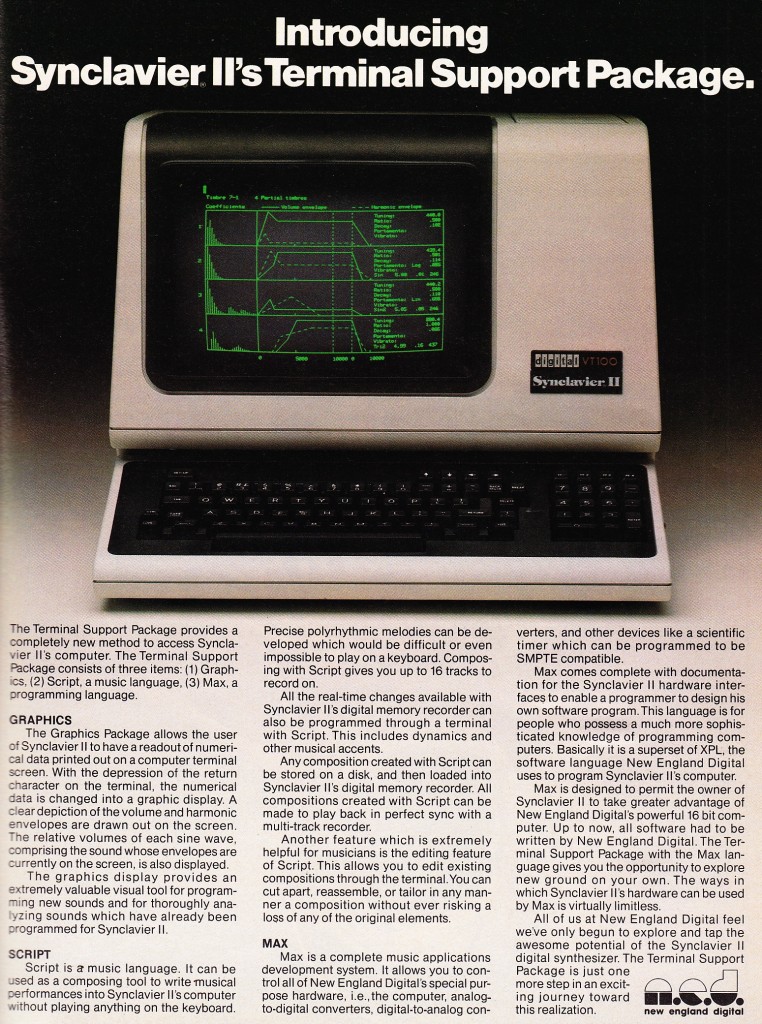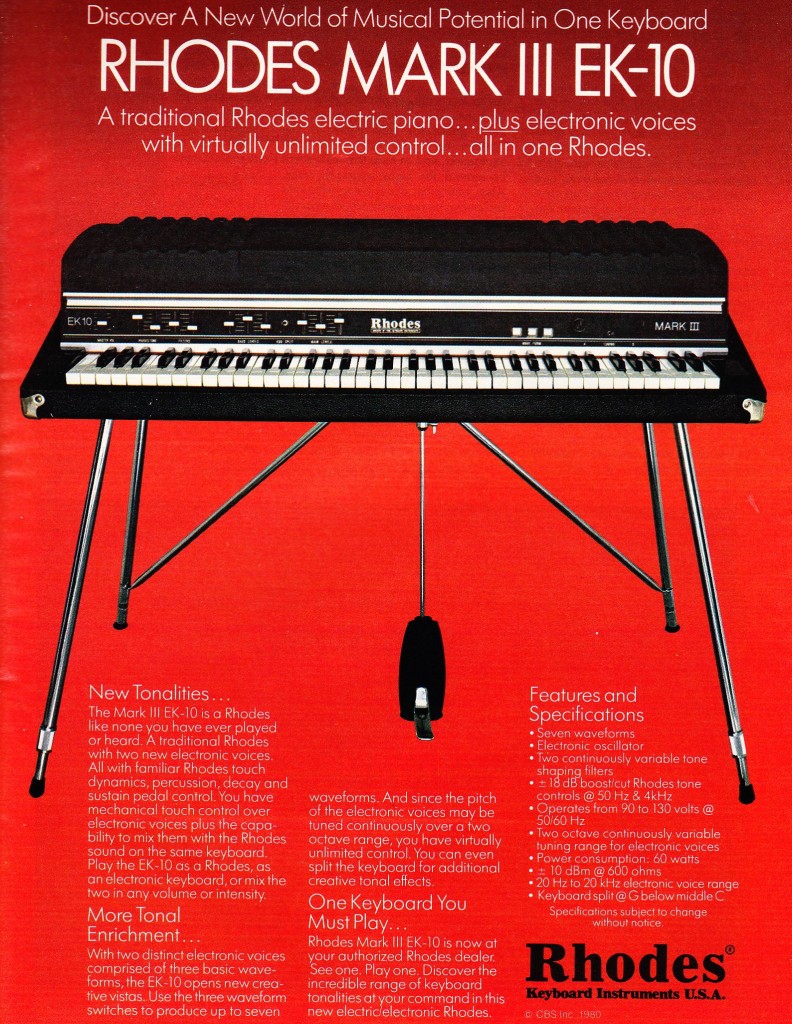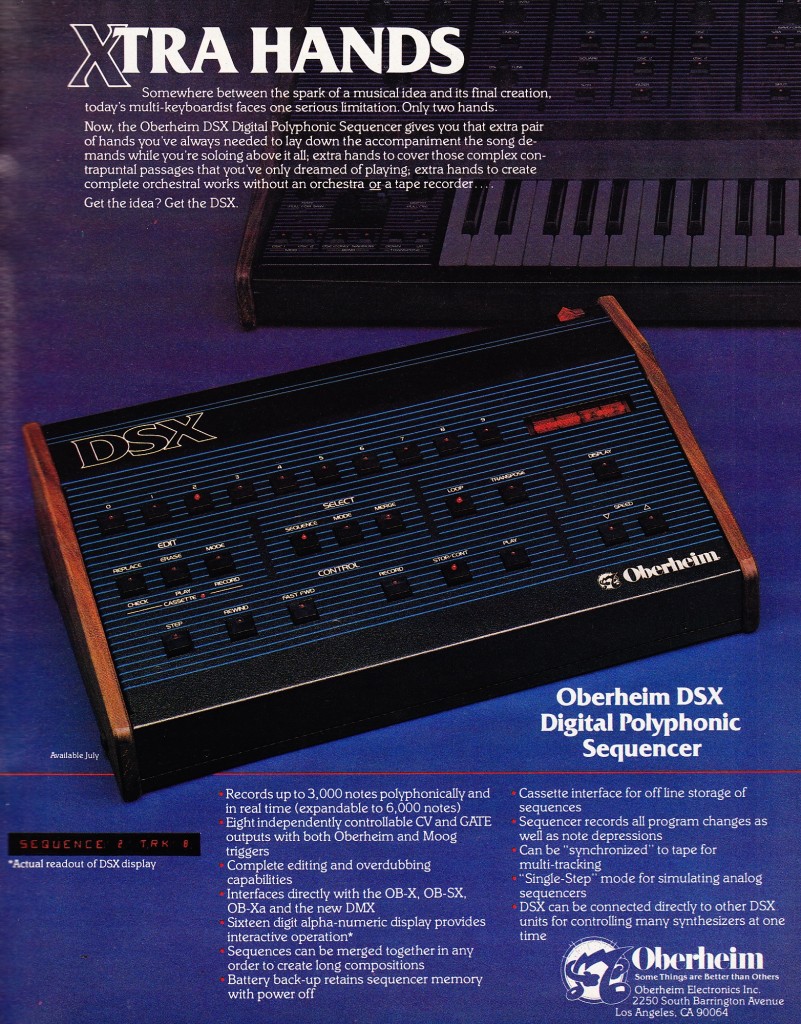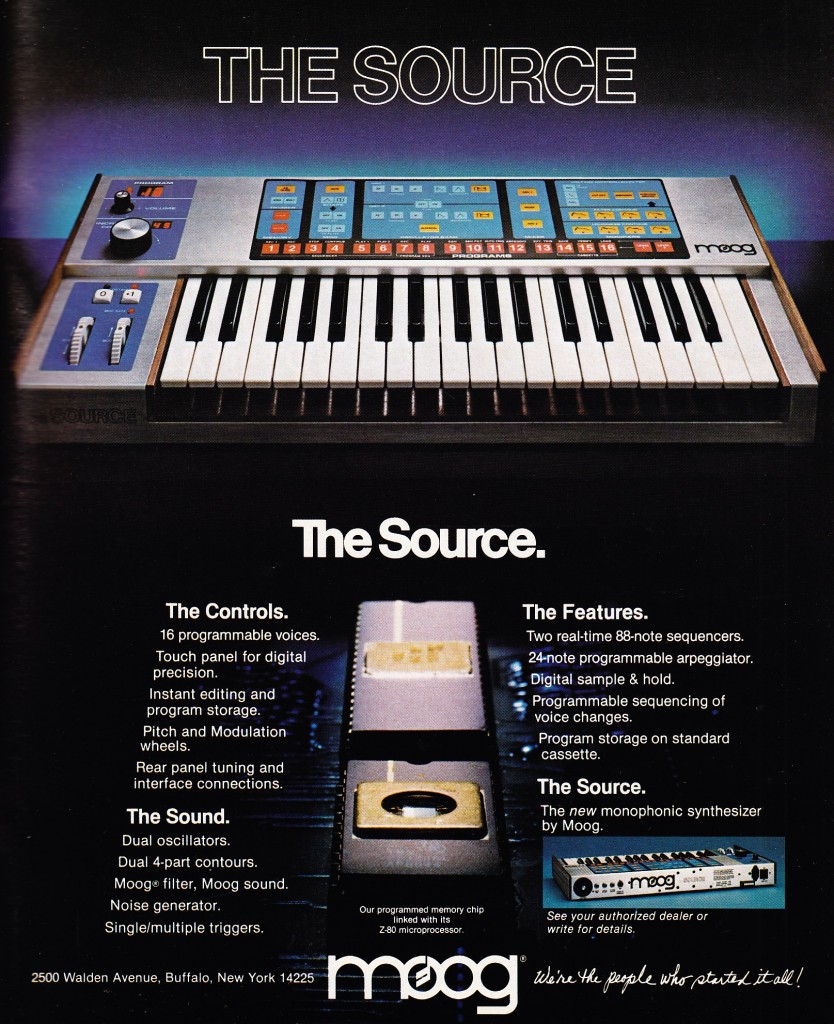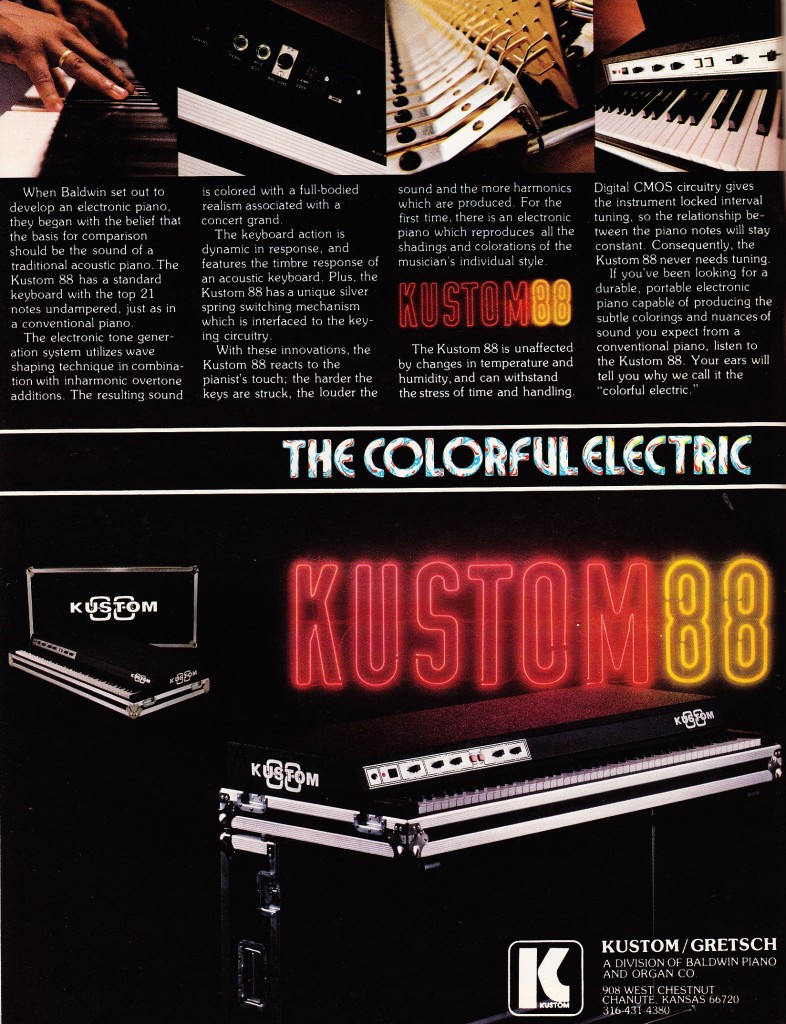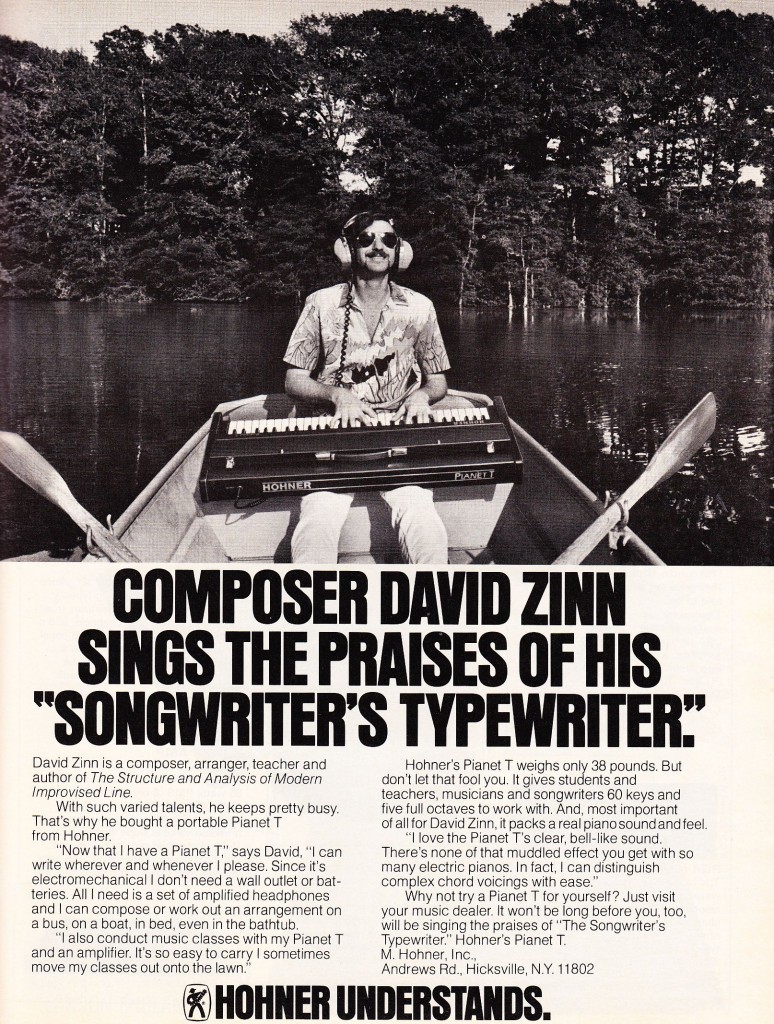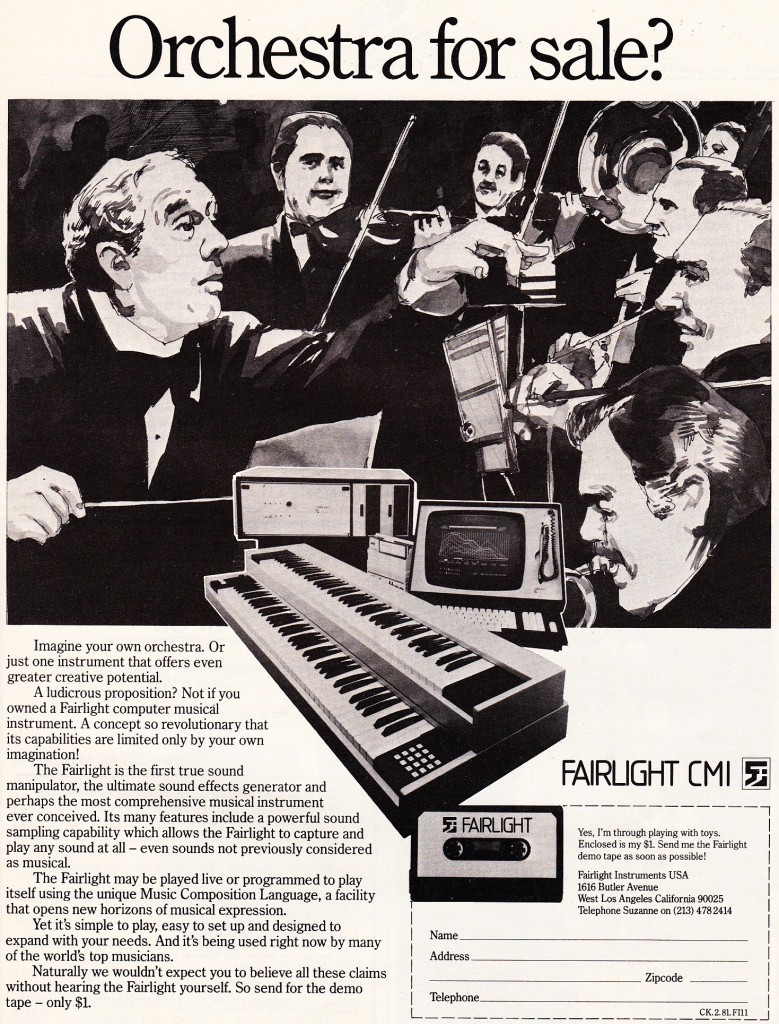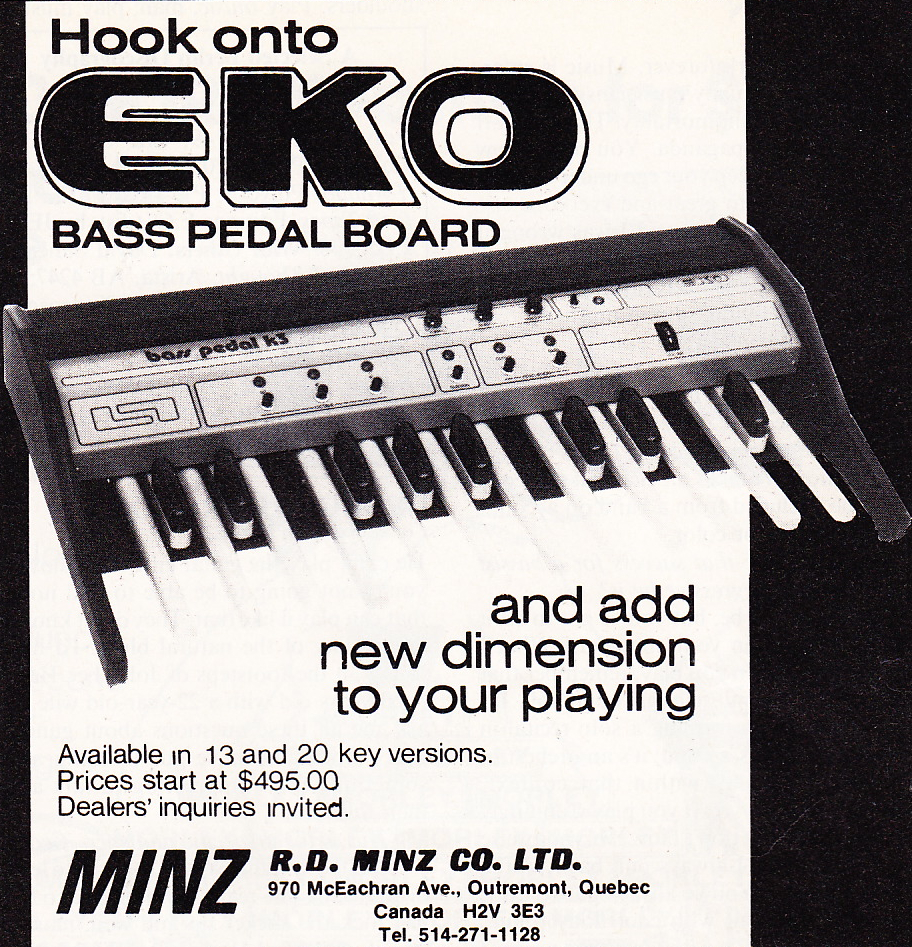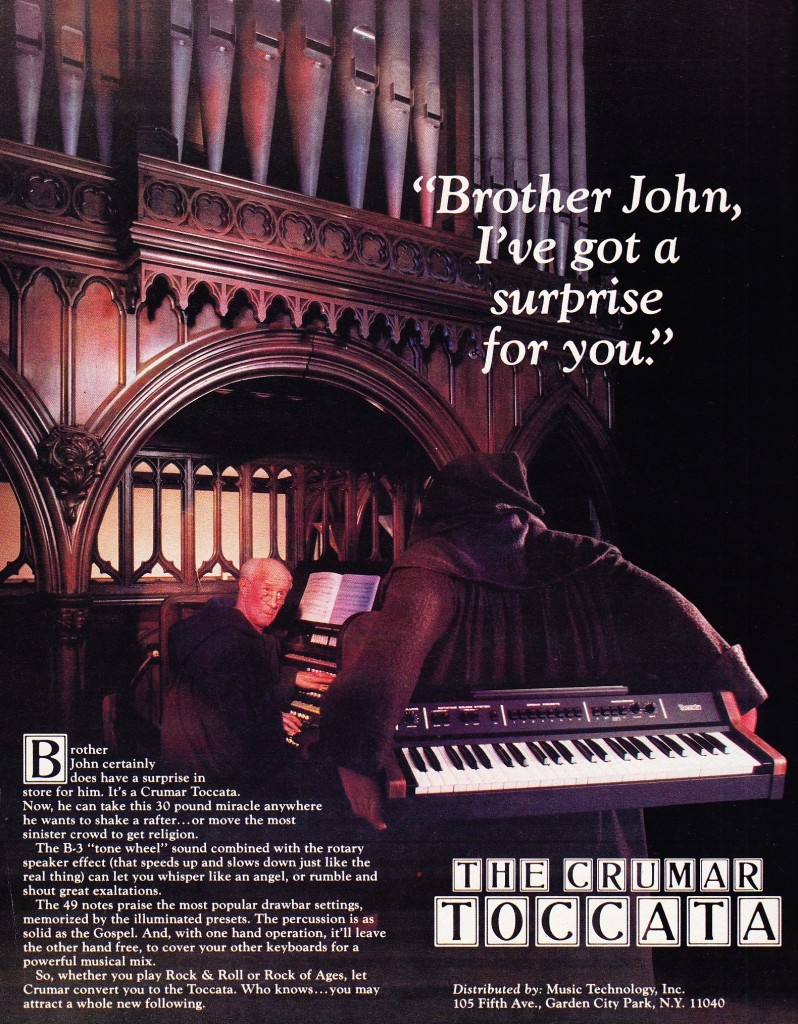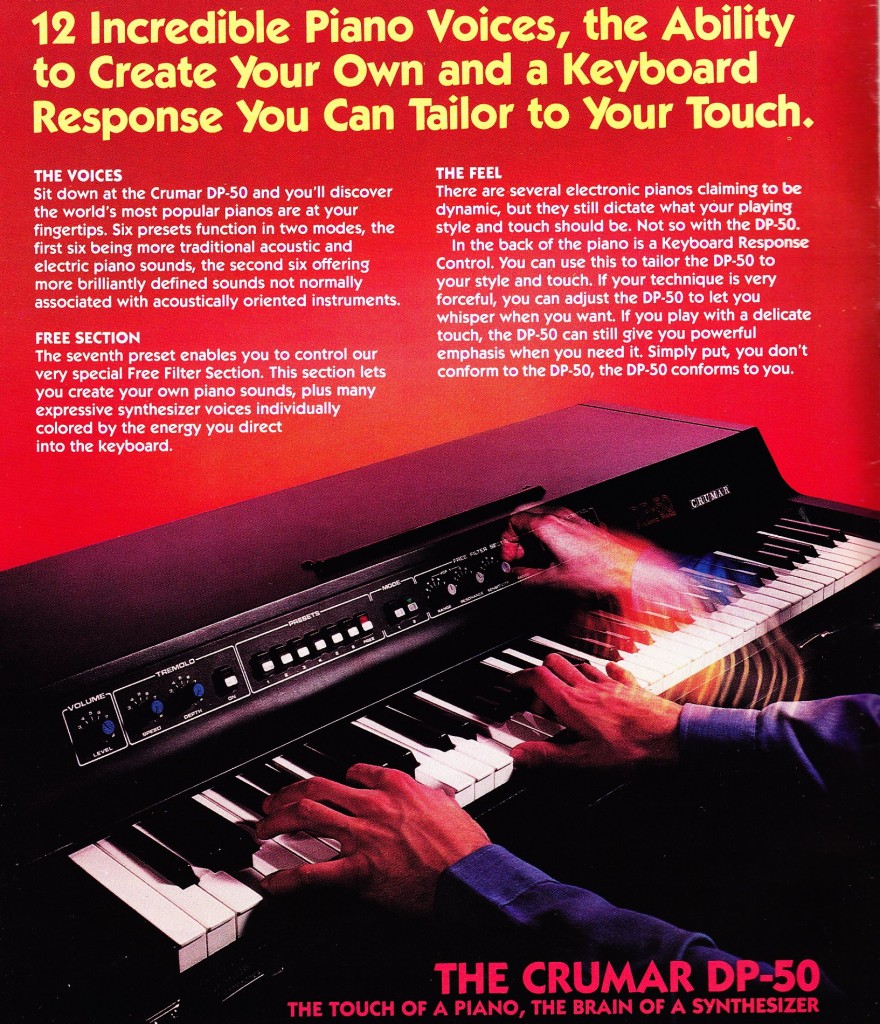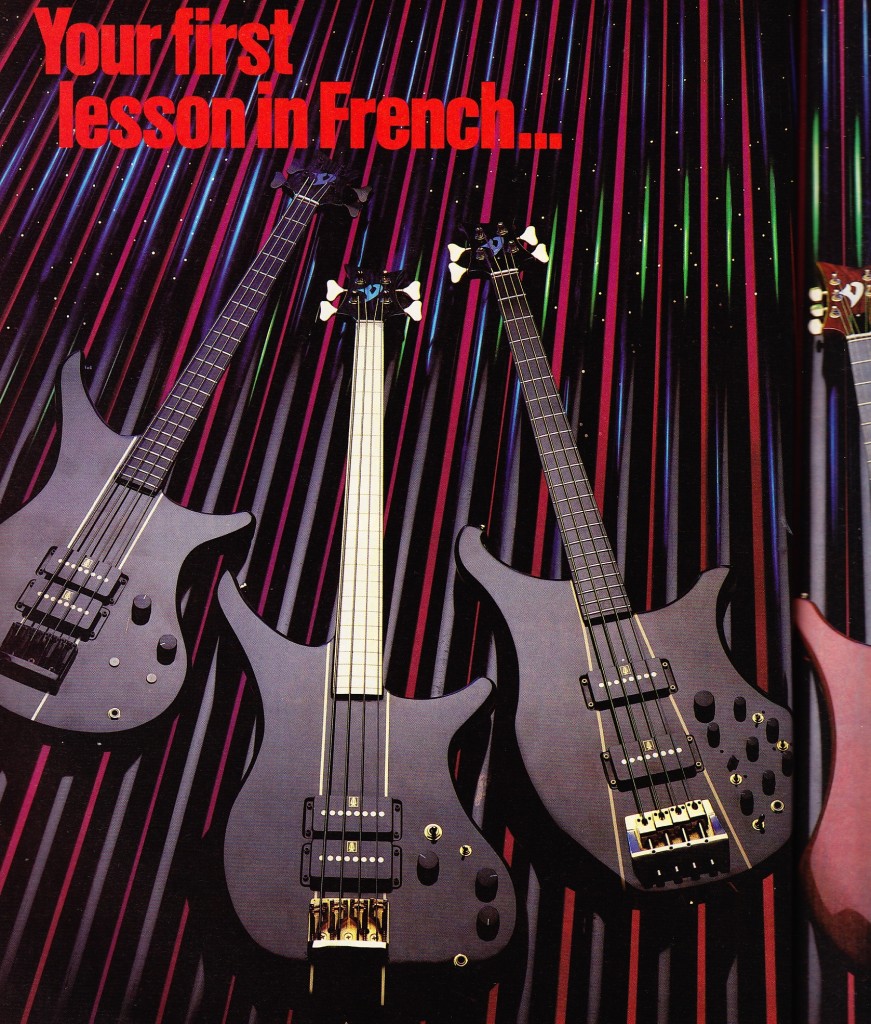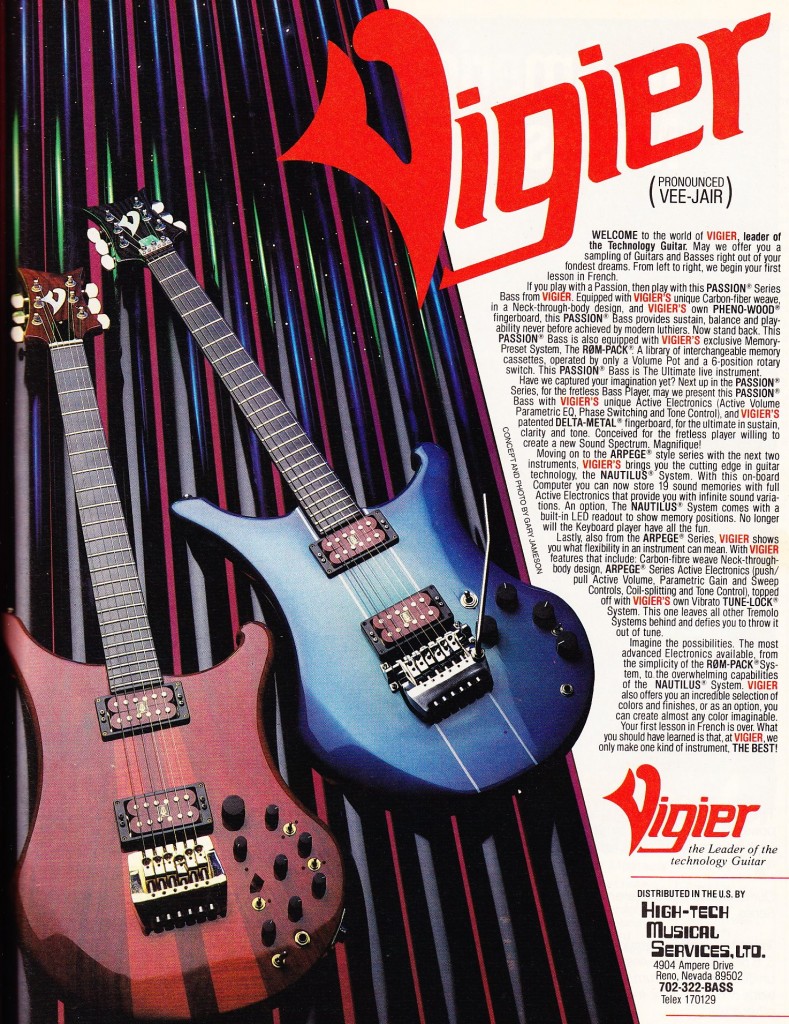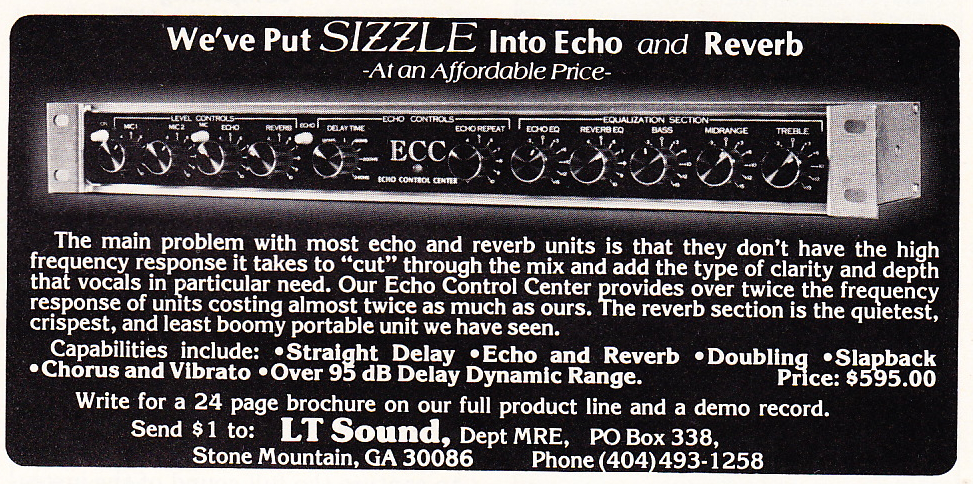 Here’s an unusual echo + reverb device circa 1982; the LT Sound ‘Echo Control Center,’ made in Georgia (USA). A quick search reveals that these have appeared on eBay from time to time. Anyone using one of these? Anything to recommend it?
Here’s an unusual echo + reverb device circa 1982; the LT Sound ‘Echo Control Center,’ made in Georgia (USA). A quick search reveals that these have appeared on eBay from time to time. Anyone using one of these? Anything to recommend it?
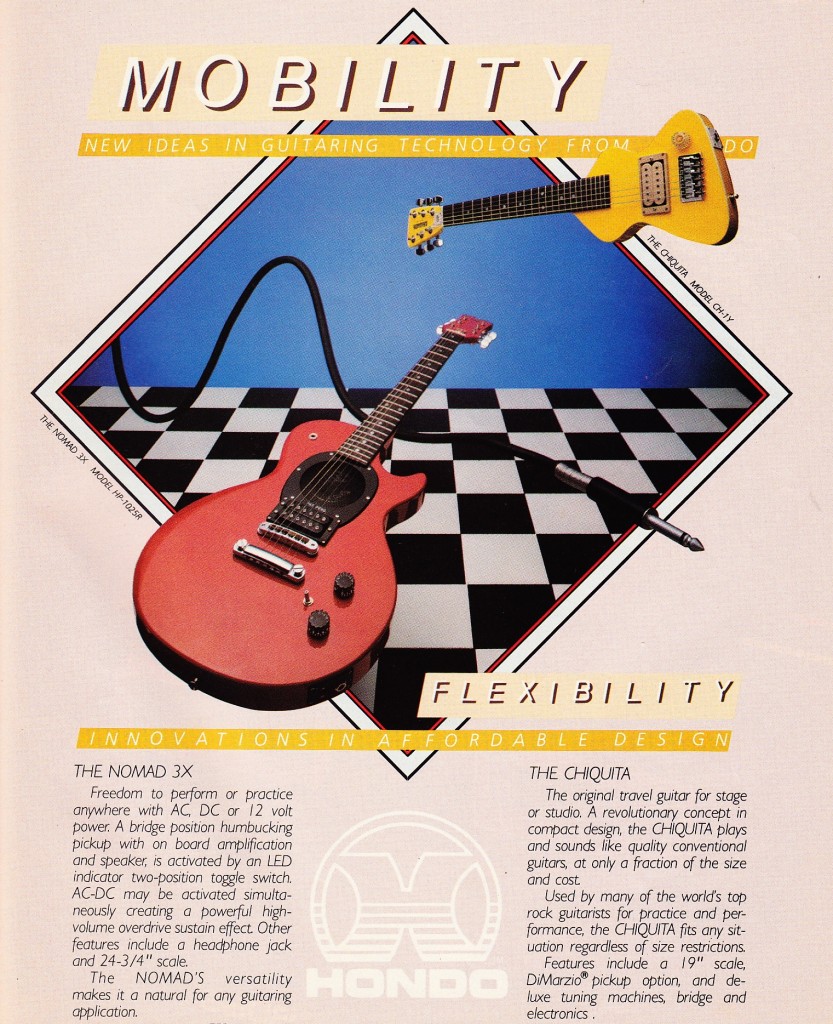 Above: many are familiar with “The Chiquita,” the ‘original (banana shaped/coloured) travel guitar’; less well-known is The Nomad 3X, a les-paul-jr-styled, full-scale guitar with a built-in-amp; it promises to operate from AC, DC, or 12 volt power. Okay… Anyhow, for previous HONDO coverage on PS dot com, click here… oh, and you prolly aughta click here, too…
Above: many are familiar with “The Chiquita,” the ‘original (banana shaped/coloured) travel guitar’; less well-known is The Nomad 3X, a les-paul-jr-styled, full-scale guitar with a built-in-amp; it promises to operate from AC, DC, or 12 volt power. Okay… Anyhow, for previous HONDO coverage on PS dot com, click here… oh, and you prolly aughta click here, too…
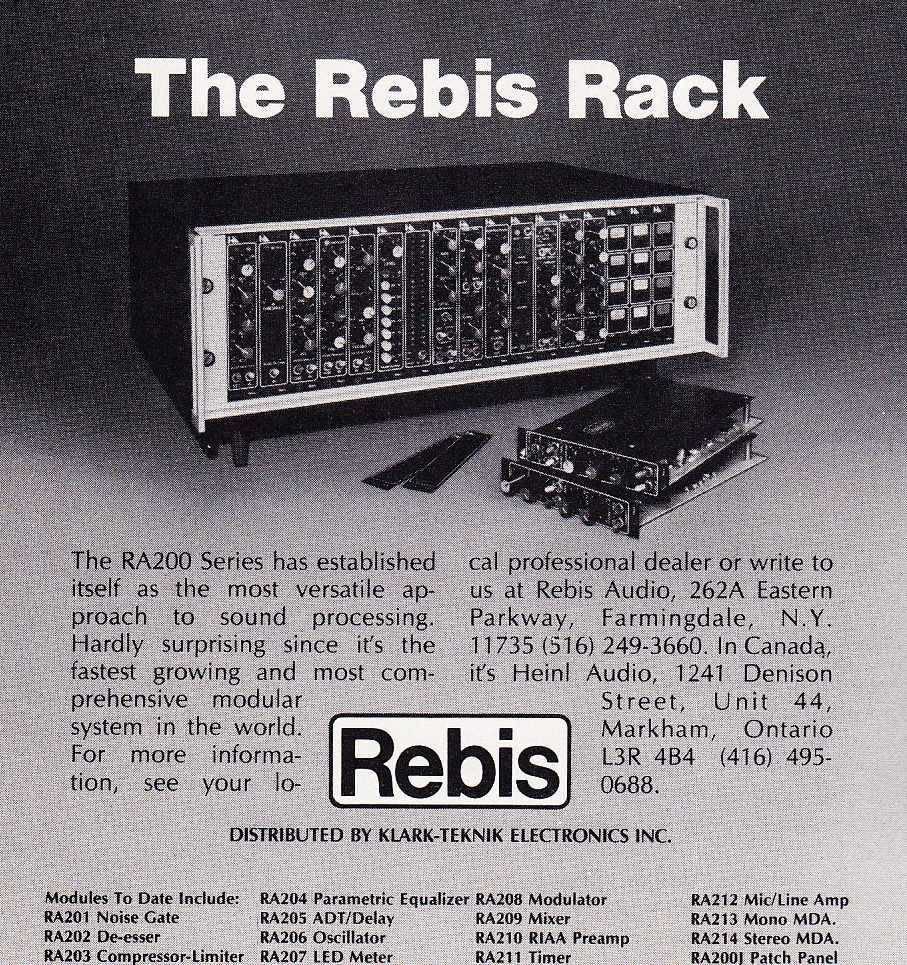 I was flipping thru some old pro audio mags and this REBIS (distributed by Klark-Teknik) advert caught my eye… I imagine that there must not be too many of these REBIS racks out there. I don’t think that I have ever come across any original REBIS documentation in the PS dot com archive, but i’ll give it another look…
I was flipping thru some old pro audio mags and this REBIS (distributed by Klark-Teknik) advert caught my eye… I imagine that there must not be too many of these REBIS racks out there. I don’t think that I have ever come across any original REBIS documentation in the PS dot com archive, but i’ll give it another look…
There is a very informative thread on GS regarding this line…
For our earlier coverage of the (earlier…) DBX 900 modules, click here…
And for our earlier coverage of the (earlier…) AD&R ‘Scamp’ modules, click here…
And for coverage of the 80’s Aphex module line, click here…
Any 80’s-era modular outboard I’ve missed fellas? Let us know…
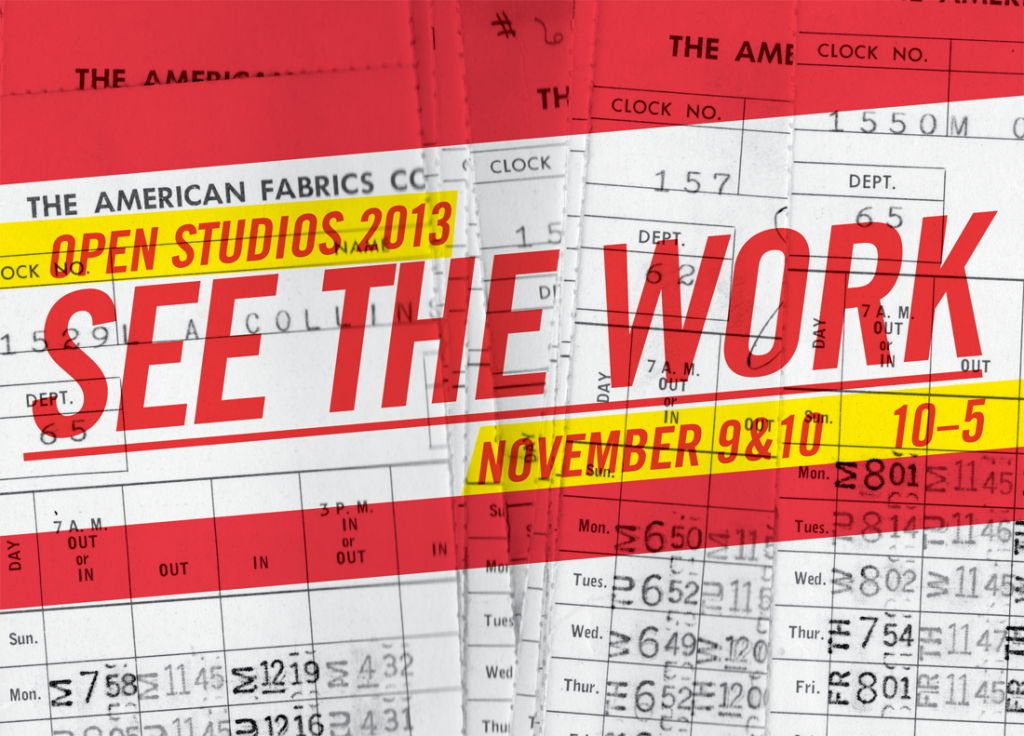 hi y’all – the Bridgeport CT annual artists-open-studio event will take place in three weeks. Preservation Sound will take part in the festivities once again. If you are in the NY metro area, it’s a free event + worth coming by; we have many fine practitioners of varied stripe in the former American Fabrics factory: fine art photographers, textile artists, painters, sculptors, and some indefinable.
hi y’all – the Bridgeport CT annual artists-open-studio event will take place in three weeks. Preservation Sound will take part in the festivities once again. If you are in the NY metro area, it’s a free event + worth coming by; we have many fine practitioners of varied stripe in the former American Fabrics factory: fine art photographers, textile artists, painters, sculptors, and some indefinable.
For my part, I will have several fresh equipment builds on display + for purchase, including guitar, home hi-fi, and recording studio equipment, plus, for the first time, tons of LP records, vintage audio equipment, and general antique audio flotsam+jetsam. I’ll be passing the time hand-building… something, I’m not sure yet, but probably some sort of esoteric vacuum-tube mic preamp.
Full details are available here.
I’ll be posting another reminder the week of the event.
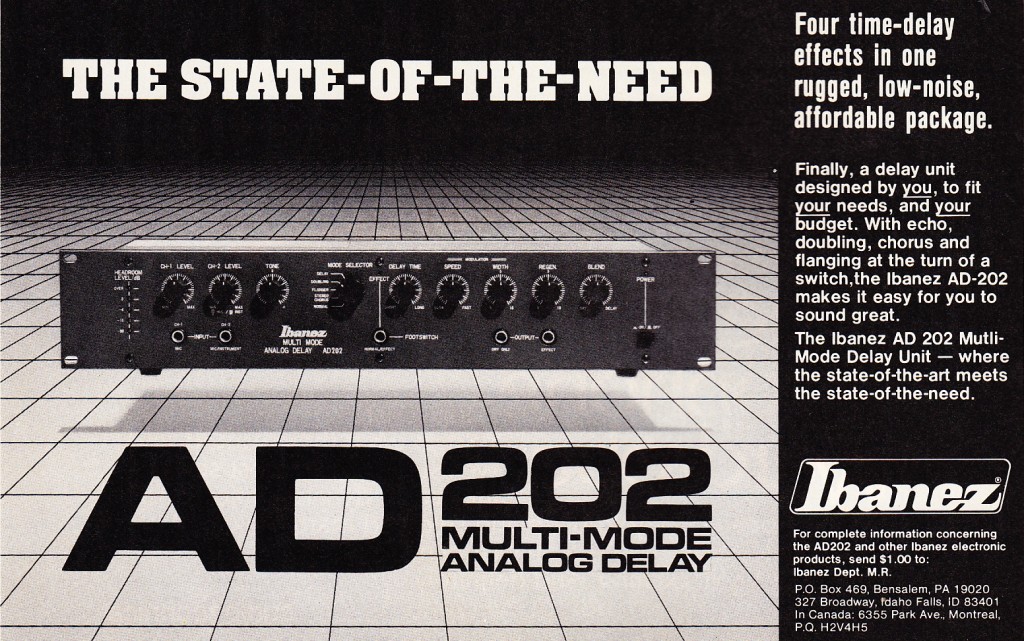 Above: the Ibanez AD202 c. 1981. A multimode analog delay with modulation section. I had one of these in maybe 1994 and it was a phenomenally great unit. What on earth did I do with it? No idea where it ended up. It had this great crunch to it when it overloaded.
Above: the Ibanez AD202 c. 1981. A multimode analog delay with modulation section. I had one of these in maybe 1994 and it was a phenomenally great unit. What on earth did I do with it? No idea where it ended up. It had this great crunch to it when it overloaded.
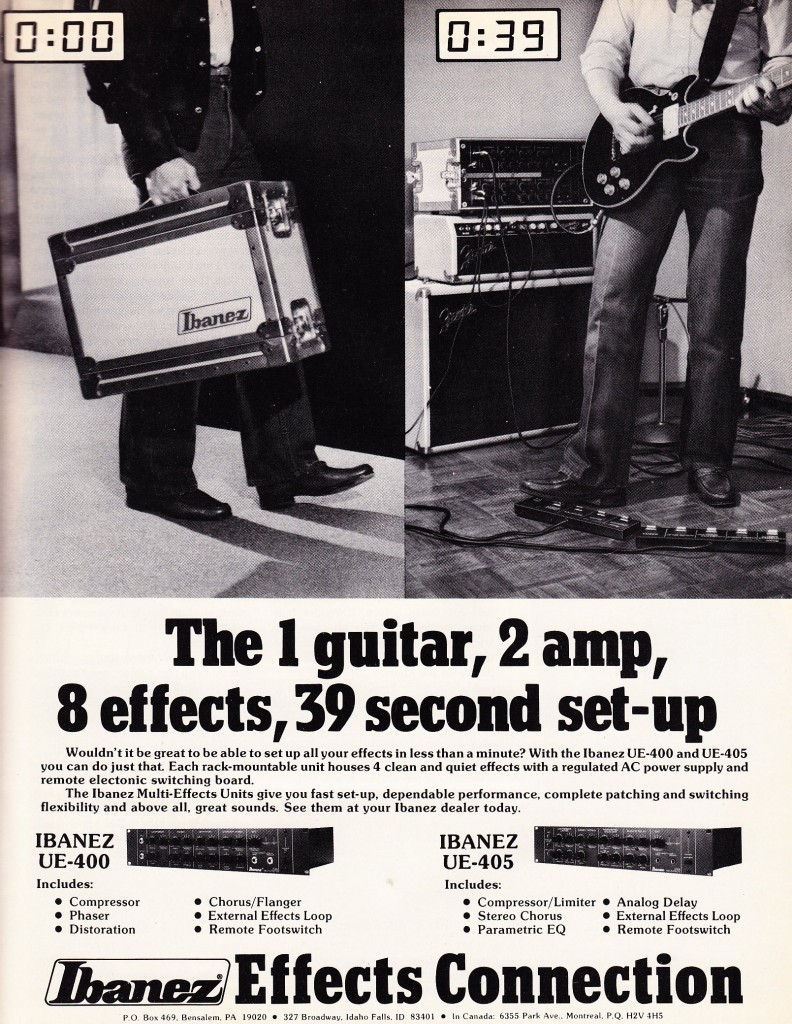 Above, the Ibanez UE-400 and and UE-405, also c. 1981: 4x analog rack-mount multi-effects units. I found a UE-405 (the one with Delay) with the pedal+ a rack case in a Minnesota Guitar Center in maybe 2003? I paid about $150. I used it on a few tracks and sold it when I moved apartments. Bad move, even at a big profit… another great unit that I wish I had kept. BTW, above, I love that dude is using his UE-40X’s with a blond Fender Bassman piggyback. Pretty good, pretty good…
Above, the Ibanez UE-400 and and UE-405, also c. 1981: 4x analog rack-mount multi-effects units. I found a UE-405 (the one with Delay) with the pedal+ a rack case in a Minnesota Guitar Center in maybe 2003? I paid about $150. I used it on a few tracks and sold it when I moved apartments. Bad move, even at a big profit… another great unit that I wish I had kept. BTW, above, I love that dude is using his UE-40X’s with a blond Fender Bassman piggyback. Pretty good, pretty good…
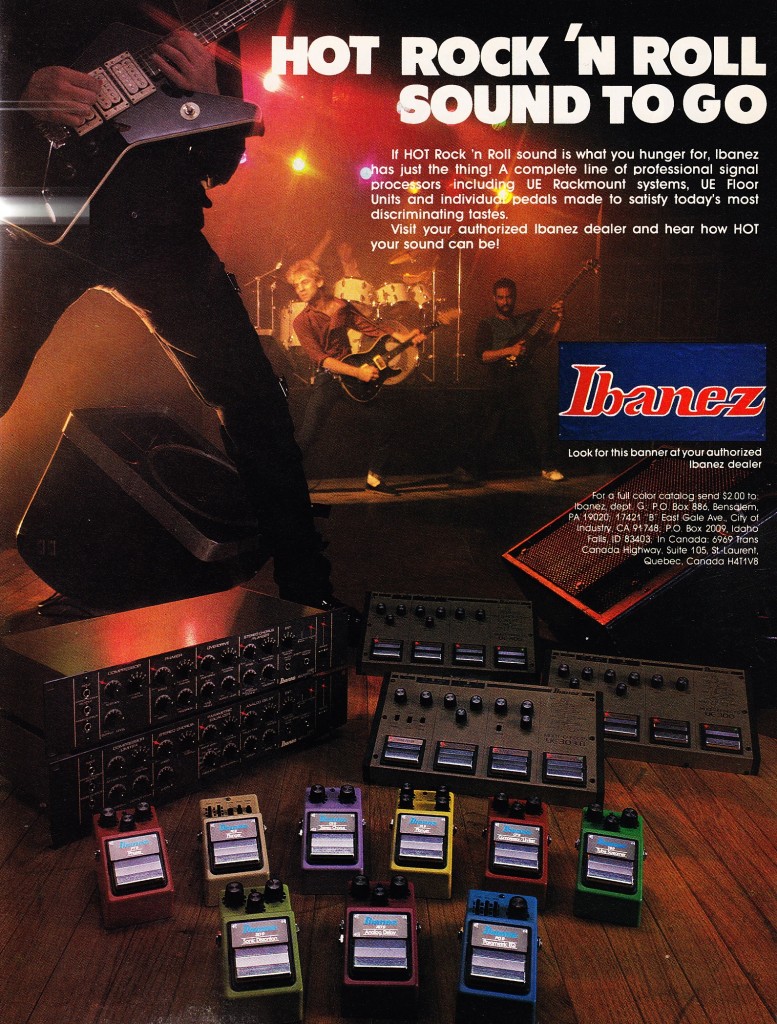 Above: the complete Ibanez FX lineup of 1984, right before the transitioned to the single-rackspace digital units. I recently found the ‘bass’ pedal-board unit (compressor, flanger, and envelope filter) for $60 at the flea market. Which seemed expensive, but I was given many assurances. Dude totally ripped me off! It had some weird distortion issue that I could not easily diagnose. To the transfer station with that one. Caveat emptor…
Above: the complete Ibanez FX lineup of 1984, right before the transitioned to the single-rackspace digital units. I recently found the ‘bass’ pedal-board unit (compressor, flanger, and envelope filter) for $60 at the flea market. Which seemed expensive, but I was given many assurances. Dude totally ripped me off! It had some weird distortion issue that I could not easily diagnose. To the transfer station with that one. Caveat emptor…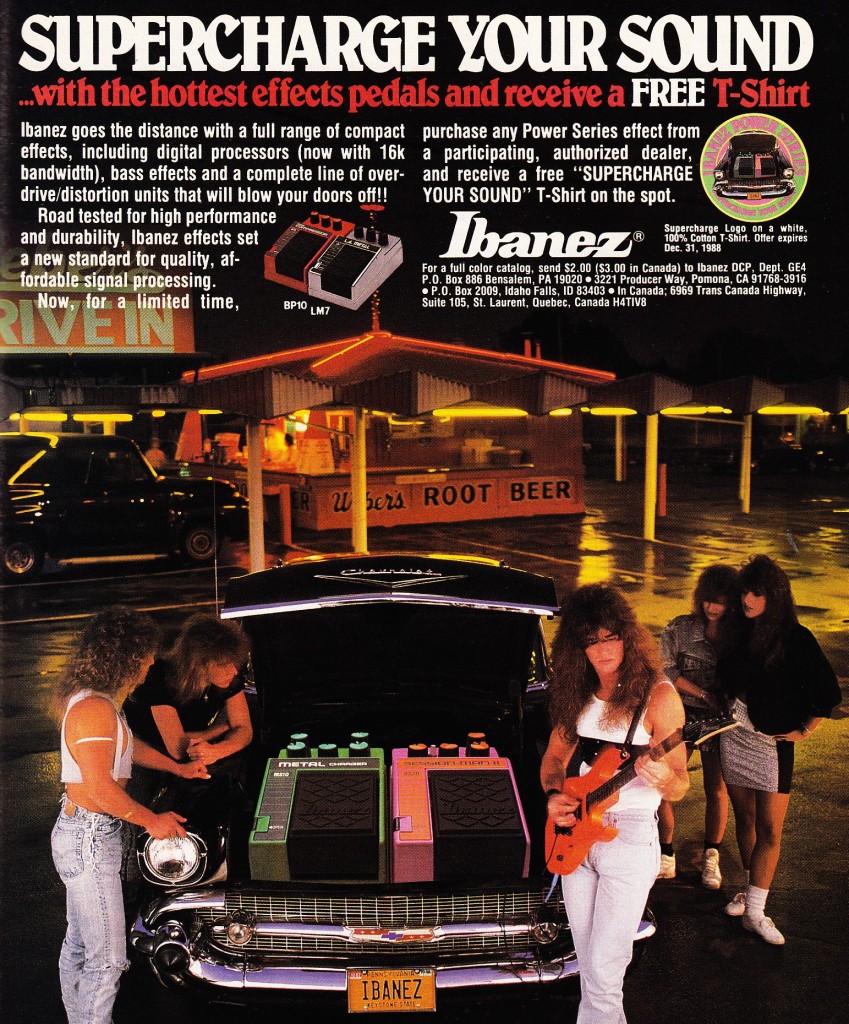 Above, an ad for root beer, bad denim, and hairspray c. 1988. I think they lost my interest by this point.
Above, an ad for root beer, bad denim, and hairspray c. 1988. I think they lost my interest by this point.
What does “Rock” mean?
This is a guitar advert from 1982 (American, Dean Guitars INC)
When the term “rock” (as a verb) was first introduced into pop-music parlance, it was a code-word for coitus.
You know, ‘relations.’
Fucking, ok?
When early ‘rockers’ sang about ‘rock all night,’ ‘i wanna rock,’ ‘rock my baby,’ ETC., they were not describing some circular or even elliptical motion by which to move through space. The books of Nick Tosches, esp. his volume on Jerry Lee Lewis, go into great detail about the etymology of ‘rock’ as used in 20th century popular music, so I don’t need to retread all that. The whole concept of ‘rock,’ ‘rocking,’ etc., was a genius songwriting concept that allowed songwriters and recording artists to talk to their teenage-audience about the ONLY thing on their teenage minds without alarming parents or the FCC. Anyhow, my point is: the one-to-one literal substitution of ‘Rock’ for ‘Fuck’ in early ‘rock-music’ is something that we can all pretty reasonably agree on.
Which is why the whole phenomenon of bands ‘rocking’ their audience is more than a little confusing. When a band-of-bros takes the stage and announces that they are going to ‘rock’ a crowd, they are clearly not announcing their intentions to pursue intercourse with every member of the audience. And when the audience responds positively to this outburst from the stage, they are certainly not all expressing excitement at the impending ‘penetration’ from the band-members.
So what exactly do we mean today when we talk about ‘Rock’ or ‘Rocking’? What exactly does it mean to ‘Rock’ and/or ‘to be-Rocked’ ? Is it perhaps ‘to-be-brought-to-a-heightened-sensual-state similar-in-intensity-to-that-of-actual-sexual-arousal? Or is ‘Rock’ an externalized, commodified imitation of that internal, personal state? Or is ‘ROCK’ simply an industrial term, I.E., does (anything that is part of the economic system of packaging and presenting musical performers) (of a certain stripe) = ‘rock’?
And perhaps most oddly, what do we make of (very regular, for the past 40 years) pronouncements that ‘Rock Is Dead’?
Keyboard Pluralism: 1980-1982
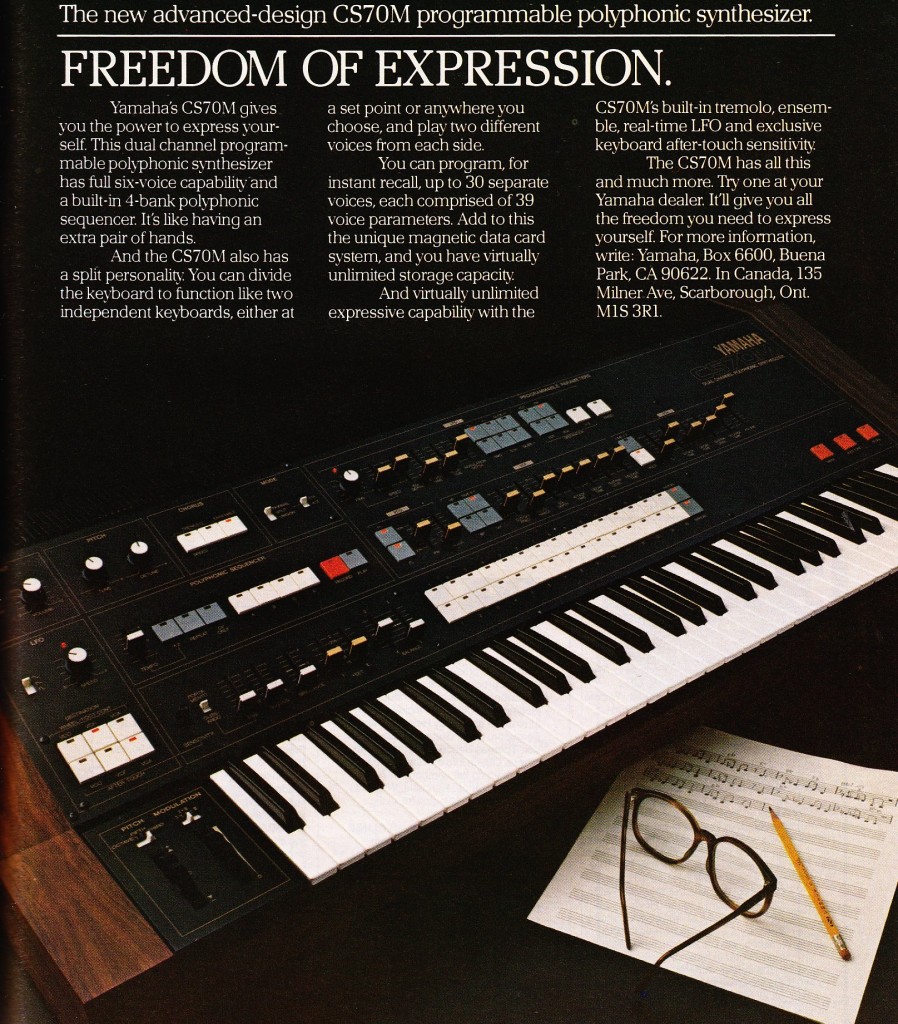 Above: The Yamaha CS70m (1982)
Above: The Yamaha CS70m (1982)
Today on PS dot com: some oddball keyboards from 1980-1982. Check out the incredible heterogeneity of the offerings here: analog monosynths, analog polysynths, electric organs, electro-acoustic pianos, analog “electronic pianos,” and super-high-end digital workstations. In just one year, Yamaha would release the world’s first affordable digital synth, the DX7, and this would soon lead to the overwhelming popularity of the dreaded “Rompler” (Korg M1 anyone?): keyboards which were difficult for the player to easily program. The result was two decades of generic, predictable synthesizer sounds appearing in much pop and rock music. Luckily, we now have affordable, easy-to-use analog synths again (most notably from KORG); and those shitty old romplers? Personally, I run mine (a Kawai K-1) through a whole string of guitar pedals, chop+slice, and sometimes that’s just the sound the track needs…
Below: Synclavier II, one of the two ‘popular’ early digital super-synths, introduces control software (1981) to allow easier programming; Rhodes Mark III EK-10, one of the last of the original mechanical Rhodes pianos (1980); Oberheim polyphonic sequencer for CV/Gate synths (1981); Moog THE SOURCE analog monosynth with digital patch memory (1981); The Kustom 88 ‘electronic piano’ (1981); Hohner Pianet T Electric ‘Piano’ (more like an electric glockenspiel IMHO) (1981); The Fairlight CMI digital workstation, the other early digital monster (1982); EKO bass pedal board (1981); The Crumar Toccata electric organ (1981) and DP-50 electronic piano (1982).
*******
***
We had a SOURCE when I was a kid (around 1993, JR?) and it was impossible to get it to play in tune; I briefly had a Pianet T and WOW do I regret selling it: i’ve had just about every model of Pianet and I can say with total confidence that the T is the one to get. Smaller, less hassle, passive electronics… I really wouldn’t advise fkkn around with the earlier models. Besides those two, I’ve never used any of these. Anyone using ’em these days? Shit, anyone using an M-1 these days? Send us some modern tracks with fresh use of the M-1? There’s a zillion of those things out there, someone’s gotta bring em back…
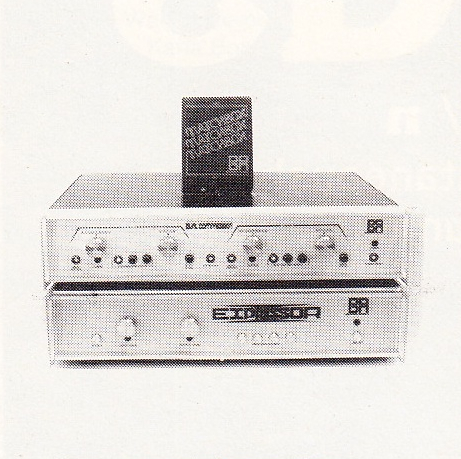 Above: The Browning And Rice brand Dual Compressor and Expressor circa 1980. There seems to be zero online information regarding these intriguing devices. Who are these Mssrs. Browning and Rice? As you might imagine, it is v v difficult to research the keywords ‘Browning’ ‘Rice’ on the internet. Anyone?
Above: The Browning And Rice brand Dual Compressor and Expressor circa 1980. There seems to be zero online information regarding these intriguing devices. Who are these Mssrs. Browning and Rice? As you might imagine, it is v v difficult to research the keywords ‘Browning’ ‘Rice’ on the internet. Anyone?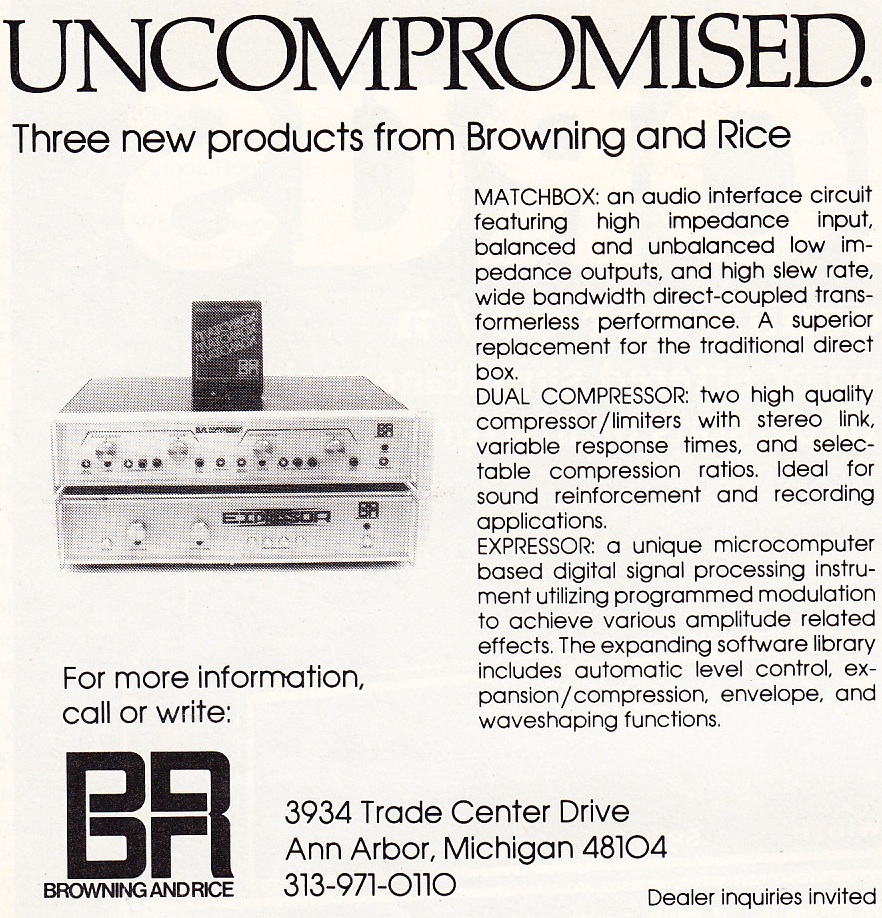
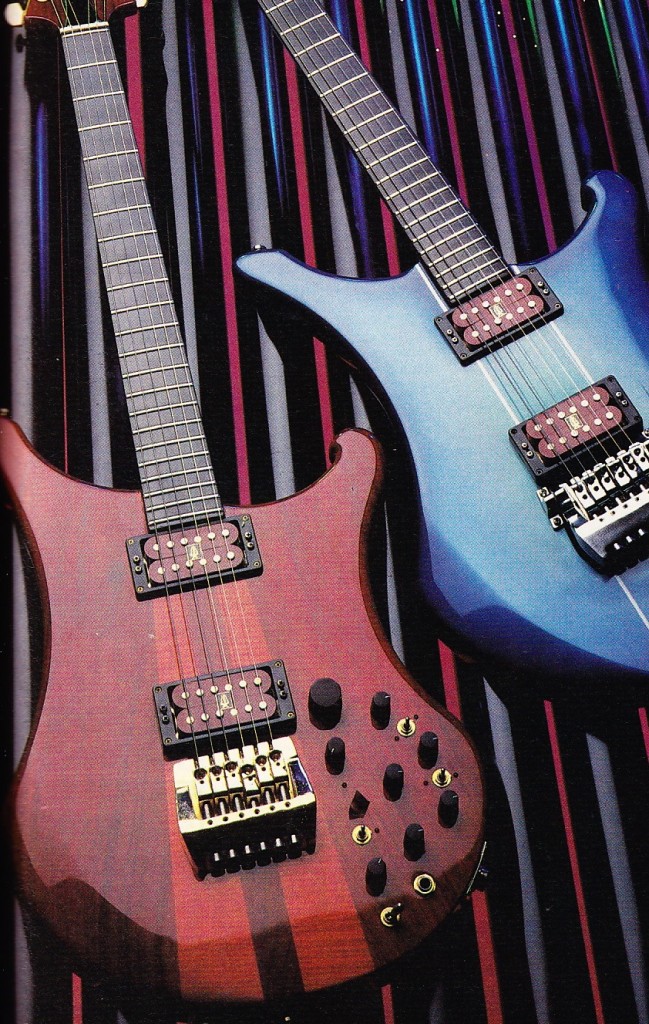 Combining a Rickenbacker-esque body shape and BC-Rich style electronics, these circa 1986 Vigiers are pretty interesting, unlike the staid ‘super-strats’ that the company offers today. (Is it even the same company? Let us know,,,,). They also remind me a bit of certain older models of Killer, the high-end Japanese brand that’s never been offered in the US. These 80s Vigiers were astronomically expensive, so it’s not surprising that I’ve never actually seen one. Anyone?
Combining a Rickenbacker-esque body shape and BC-Rich style electronics, these circa 1986 Vigiers are pretty interesting, unlike the staid ‘super-strats’ that the company offers today. (Is it even the same company? Let us know,,,,). They also remind me a bit of certain older models of Killer, the high-end Japanese brand that’s never been offered in the US. These 80s Vigiers were astronomically expensive, so it’s not surprising that I’ve never actually seen one. Anyone?
